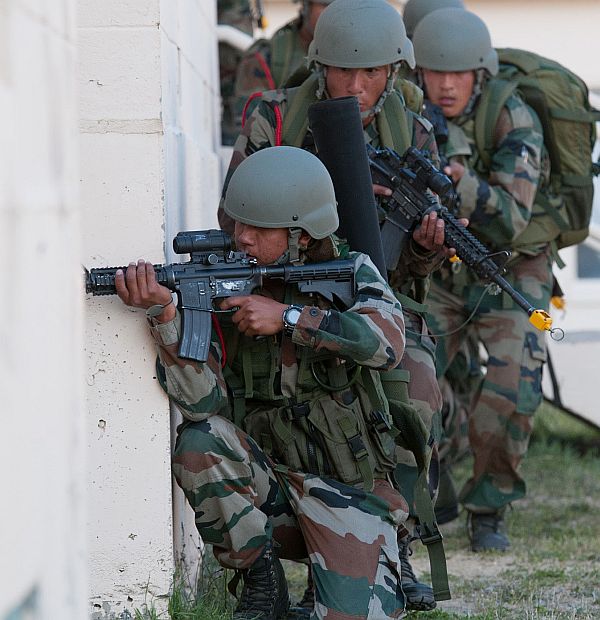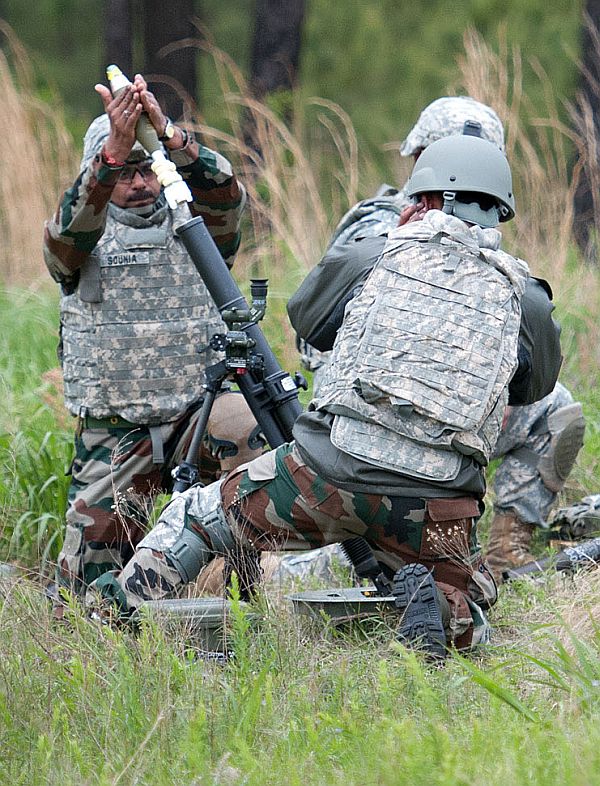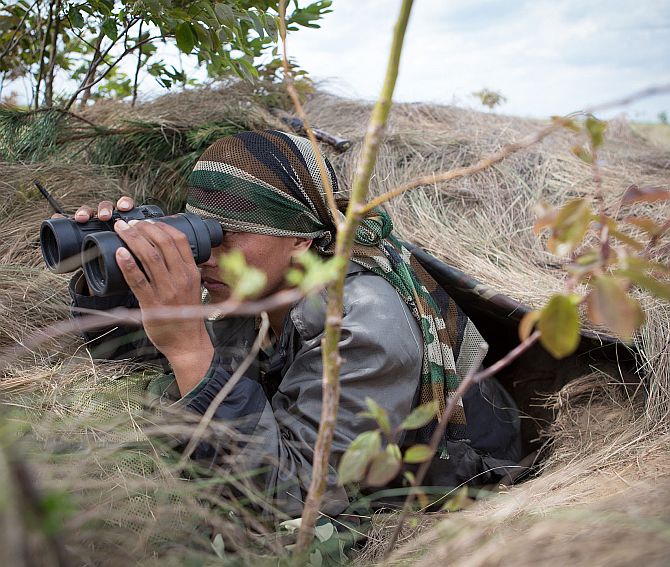 | « Back to article | Print this article |
17 Corps: The Army just got itself a white elephant
The new mountain strike corps, created to deter Chinese adventurism and launch offensives, will financially damage India’s military.
The army, navy and air force, like careless credit-card users, have run up so many bills that the capital allocation now largely pays for earlier buys, leaving almost nothing for new procurement.
That’s why some feel that the mountain strike corps will be yet another immobile, inadequately equipped formation, Ajai Shukla reports
On the New Year, a flag-hoisting ceremony in Ranchi marked the raising of 17 Corps, India’s fourteenth army corps.
This is the army’s first mountain strike corps, manned by more than 80,000 soldiers, who will launch offensives into enemy territory while the existing formations defend Indian soil.
Triumphal media commentary has lauded this as a caution to China after last year’s incident at Daulat Beg Oldi, when a Chinese patrol intruded into the northern tip of India in April/May and set up camp on the Indian-held Depsang Plain.
India has already raised two new mountain divisions in the last five years, boosting the defence of Arunachal Pradesh by some 40,000 troops. Now, another 80,000 hope to deter Chinese adventurism.
Yet, a Business Standard analysis of defence spending suggests that the MSC will financially damage India’s military more than it could military damage China’s, by dealing a crippling blow to military modernisation. (GRAPHIC: MANAGING DEFENCE FINANCES)
Click on NEXT to read further...
17 Corps: The Army just got itself a white elephant
Already half the defence budget goes to the army, which spends just 18 per cent of that allocation on new equipment.
More than four rupees of five go on revenue expenditure -- the cost of salaries, transportation, training, housing, etc -- just to keep the army running.
Of that, two-thirds goes on pay and allowances for 1.2 million soldiers. Adding 80,000 more will bloat the payroll unsustainably, with a further blow coming when the 7th Pay Commission raises salaries. That will drive down capital expenditure.
While the army, more than the navy and air force, is a manpower intensive force, its challenges on the mountainous northern border relate more to equipment shortages -- like 155-millimetre ultra-light howitzers and towed guns, and air support -- than to any dearth of manpower.
The large numbers already deployed are also rendered ineffective by a poor road network that ties them down to one spot. Analysts note that this lack of roads will also prevent the strike corps from moving quickly, depriving it of the crucial element of surprise.
“The mountain strike corps will be yet another immobile, inadequately equipped formation,” predicts a top army planner.
Click on NEXT to read further...
17 Corps: The Army just got itself a white elephant
MoD planners have glossed over the issue of funding for the MSC.
Its estimated price tag of Rs 64,000 crore over the next five-eight years requires Rs 8,000 crore to be spent annually, for eight consecutive years, as units are raised and equipment procured.
However, an examination of capital spending makes clear that major new expenditure cannot be absorbed. The reason -- almost the entire capital budget is pre-committed to instalments for procurements made in earlier years.
In major defence purchases, payment is normally spread over 5-10 years, as the vendor meets delivery-linked milestones. The army, navy and air force, like careless credit-card users, have run up so many bills that the capital allocation now largely pays for earlier buys, leaving almost nothing for new procurement.
This slide has been visible for years, especially in the reports of the 15th Lok Sabha’s Standing Committee on Defence.
In 2007-08, 60 per cent of the capital budget of Rs 27,903 crore was disbursed on “committed liabilities”, ie, tranches on procurements of previous years.
Just 40 per cent, ie Rs 10,997 crore was available for new buys. By 2011-12, a mere 22 per cent of the Rs 42,462 capital allocation was available for new buys. This year, the money for new buys is just Rs 2,955 crore, a minuscule four per cent of the Rs 73,444 capital allocation to the three services. Next year will be even grimmer unless the defence budget rises sharply.
Click on NEXT to read further...
17 Corps: The Army just got itself a white elephant
MoD sources tell Business Standard that Indian negotiators are stonewalling purchases like the Rafale fighter because there is no money for the 15 per cent advance. Nor can the “committed liabilities” be raised any further.
In the circumstances, raising a MSC would require a sizable hike in the defence budget, or a major diversion of funds from the navy and air force. Given the government’s fiscal situation, the former is unlikely; bureaucrats point out that defence spending has risen fourfold since the turn of the century -- from Rs 49,622 crore in 2000-01 to Rs 2,03,672 this year.
The navy and air force, which manage their revenue expenditure much more prudently than the army, have been equally profligate with capital expenditure. Their on-going liabilities prevent any significant diversion of funds to the army.
The MoD has not responded to questions about how the MSC will be financed. Military sources confirm that no internal tri-service audit was carried out of the alternatives to an MSC, such as increased land-based firepower, air power, road building or the nuclear deterrent.
Says Brigadier (Retired) Gurmeet Kanwal, who earlier headed the army’s official think tank, the Centre for Land Warfare Studies: “Since operational plans are being increasingly made jointly, a fully integrated tri-service budget is essential to synergise the utilisation of scarce financial resources.”
Click on MORE read related feature...




